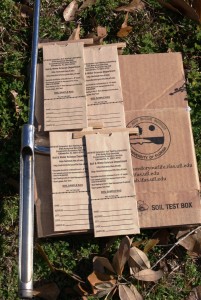by Blake Thaxton | Apr 12, 2013

UF/IFAS NW District Extension agents and the UF/IFAS West Florida Research and Education Center have joined forces to provide relevant hands on training for the Small Farmers of northwest Florida and surrounding areas by developing the Gulf Coast Small Farms and Alternative Enterprises program. This Spring Field Day will be a sneak peek at what the program will offer in the coming months and years.
Join us to discover new production practices and opportunities for your small farm or fruit and vegetable gardens!
Topics and Demonstrations:
- Irrigation Practices
- Small Farm Integrated Pest Management
- Hydroponic Float Bed Lettuce
- Protected Agriculture
- Food Safety Issues for the Small Farm

Register here: Gulf Coast Small Farms & Alternative Enterprises
For more information please contact:
Robin Vickers at 850-393-7334 or rvickers@ufl.edu
Blake Thaxton at 850-623-3868 or bthaxton@ufl.edu
by Matthew Orwat | Feb 8, 2013
 To be sure, this week’s warm spring-like weather and refreshing rains have reminded many gardeners that it is about time to prepare this year’s vegetable and flower beds. Before home gardeners fertilize or lime, however, it is vital to understand the condition of the soil.
To be sure, this week’s warm spring-like weather and refreshing rains have reminded many gardeners that it is about time to prepare this year’s vegetable and flower beds. Before home gardeners fertilize or lime, however, it is vital to understand the condition of the soil.
One of the easiest methods to assess the condition of a gardens soil is to obtain a soil test. Soil tests effectively determine the pH and nutrient levels of the soil in a given area. It is essential that the test be collected correctly so that it accurately reflects the nutrient levels in the garden. All that is needed to take an accurate soil sample is shovel or soil probe, and a plastic bucket. Metal buckets will contaminate soil sample results, so a plastic bucket is an absolute requirement. To collect your soil sample, follow these guidelines:
- Identify the garden area(s) to be sampled. Use one soil sample bag for each area. Uncharacteristic or problem areas (such as depressions, etc.) within the garden should be sampled separately.
- Using a shovel (or soil probe), remove soil from a number of locations. The more soil collected from the sample area, the more accurate the results will be. Soil should be removed from the top 6 inches.
- Discard any plant material (such as leaves or roots) and deposit the soil into the plastic bucket. When you are done collecting soil, mix all the soil in the bucket to ensure it is well blended. You will have much more soil than you need to fill the sample bag, but a well-mixed representative sample is important for good results.
- Spread the soil from the bucket onto newspaper and allow it to dry thoroughly. This may take up to 24 hours. A dry sample is very important because moisture may affect the results.
- Once dry, pack approximately 1 pint of soil into the soil sample bag (filled to the dotted line) These bags are available free from your county Extension office..
The best soil test value is the $ 7.00 soil test which includes analysis of phosphorus (P), potassium (K), calcium (Ca), and magnesium (Mg) in addition to soil pH and liming requirement. The proper form should be filled out and mailed to the University of Florida with the soil sample and payment. Results will usually be sent back within 1-2 weeks. Click here to view a sample soil test report.
The soil sample report will include lime and fertilizer requirements. Remember that the recommended fertilization rates in the report are in pounds of nutrient, not pounds of fertilizer. For example, if it is recommended that the home gardener apply 2 pounds of nitrogen 1000 square feet and their fertilizer analysis is 10-10-10, they would need to apply 20 pounds of fertilizer. This is because 10-10-10 fertilizer contains 10% nitrogen.
For more information, consult your local county extension office, visit the UF/IFAS Extension Soil Testing Laboratory website, or the UF/IFAS publication Soil Sampling or Testing for the Home Garden.



